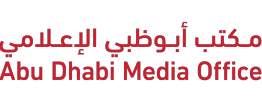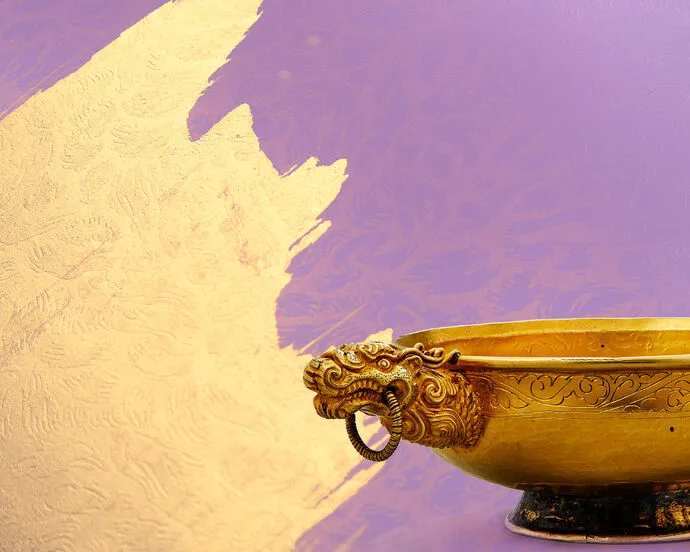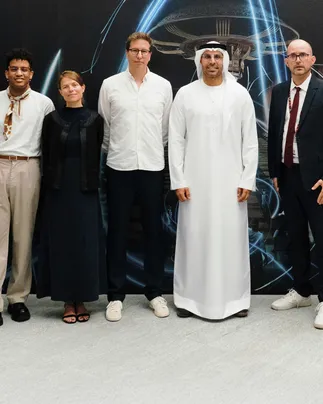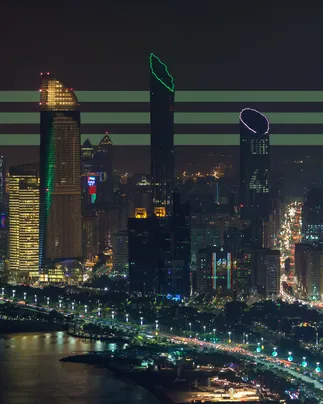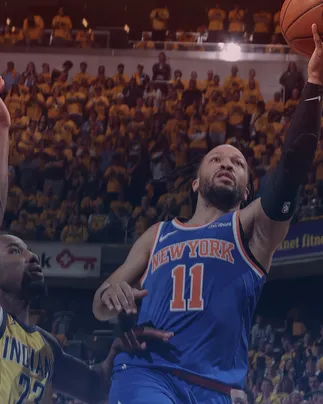Louvre Abu Dhabi has announced its second international exhibition of 2021, Dragon and Phoenix – Centuries of Exchange between Chinese and Islamic Worlds, which will run from 6 October 2021 until 12 February 2022. Organised by Louvre Abu Dhabi in partnership with Musée national des arts asiatiques – Guimet with the support of France Muséums, the exhibition will showcase the cultural and artistic exchange between the Chinese and Islamic civilisations from the 8th to the 18th century. Visitors will be able to explore cultural connections through more than 200 artworks from the collections of Louvre Abu Dhabi, the Musée Guimet and 12 international museums and institutions, alongside a wide-ranging cultural programme.
Dragon and Phoenix places in dialogue artefacts from two worlds rich in culture, arts, and sciences: China (the dragon) and the Islamic world (the phoenix). The exhibition showcases the connections, artistic influences and remarkable untold stories of more than 800 years of exchange through land and sea trade routes, from the establishment of the first Arab merchant colonies in Canton in the 8th century until the beginning of the 18th century. Journeying from the Mashriq and the Arabian Peninsula through Central Asia and the Indian Ocean, and to China and Vietnam, the exhibition reveals a long and rich history of mutual admiration and influence reflected in both material and immaterial exchanges.
Dragon and Phoenix particularly aims to highlight unconventional centres of artistic and cultural production. With both a physical exhibition at the museum and an online experience, it will shed light on how centuries of cultural exchange and the prolific artistic production between the two worlds reveal a dominance of coveted luxury materials and artworks between the 8th and 18th centuries.
The exhibition is curated by Sophie Makariou, President of Musée national des arts asiatiques – Guimet, with the support of Dr. Souraya Noujaim, Louvre Abu Dhabi’s Scientific, Curatorial and Collections Management Director, and Guilhem André, Louvre Abu Dhabi’s Chief Curator of Asian and Medieval arts.
H.E. Mohamed Khalifa Al Mubarak, Chairman of the Department of Culture and Tourism - Abu Dhabi, said: “Louvre Abu Dhabi and its esteemed partner museums have developed a well-deserved reputation for mounting world-class, incisive exhibitions that bring to light previously unknown or underestimated cultural interactions and exchanges. Given Abu Dhabi’s location as a historical and ongoing crossroads for trade, art and culture, it seems especially fitting that this exhibition is being held here at Louvre Abu Dhabi.”
Manuel Rabaté, Director of Louvre Abu Dhabi, said: “Dragon and Phoenix – Centuries of Exchange between Chinese and Islamic Worlds continues our mission of narrating stories of cultural connections, exploring exchanges between the Chinese and the Islamic worlds through the prolific artistic production of these cultures. We are able to tell these important global stories through crucial collaborations with partner museums, and we are grateful to the exhibition’s curator Sophie Makariou, the Musée Guimet, the Musée du Louvre and all our lending partners. Works from these collections, together with works in Louvre Abu Dhabi’s own collection, bring this story of rich exchange to life.”
Sophie Makariou, president of Musée national des arts asiatiques – Guimet, said: “This exhibition tells the story of two civilisations - the Islamic and ancient Chinese worlds. The long history of exchange between these two cultural centres began in the aftermath of the Quranic revelation, with the establishment of Damascus, and continued unabated after the formation of the Islamic caliphate. Until the 15th century, the trade routes, coined by Ferdinand von Richtofen as ‘The Silk Road’, were arduous but essential conduits of exchange between people, ideas, culture and products. Dragon and Phoenix – Centuries of Exchange between Chinese and Islamic Worlds tells the stories of these cultural exchanges which took place over eight centuries.”
Dr. Souraya Noujaim, Scientific, Curatorial and Collections Management Director at Louvre Abu Dhabi, said: “The exhibition reinforces the role of Louvre Abu Dhabi in highlighting transcultural relationships as well as the need to adopt novel approaches in the field of historical research. For nearly a thousand years – from the 8th century to the threshold of the 18th century – these two cultures were entwined through trade, scientific curiosity, and artistic production. Each observed and inspired the other. Our story of mutual influence and inspiration ends deliberately at the cusp of the 18th century, when alternative models with a radically new aesthetic appeared.”
Highlights from the exhibition include a rare Yuan dynasty (1279-1368) gold cup with dragon-shaped handle from China, a masterpiece from Louvre Abu Dhabi’s collection that may have been made for a nomadic dignitary in the north of China. Visitors will marvel at some of the most spectacular luxury silk fabrics ever created: the so-called Panni Tartarici (or Tartar cloths) – Mongol silk fabric with gold threads – from the collection of the Musée national des arts asiatiques – Guimet, which clearly attests to influences from other textile traditions, such as those of Iran, the Near East and Central Asia. Also from the collection of the Musée national des arts asiatiques – Guimet is a fabulous animal (perhaps a dragon), showing the impressive chiselling technique on gilded silver, a rare creation from the Liao Dynasty (907/916-1125). Dragon and Phoenix also highlights the ‘alliance of the two pens’, the brush in China and the reed pen in the Islamic world. Thanks to a superb selection of drawings, manuscripts and ink paintings, the exhibition shows the similarities and the spiritual value placed on the two calligraphic traditions.
With more than 200 artefacts spread across five sections—the first four following a historical timeline, and the fifth focusing on literary traditions of calligraphy and poetry —Dragon and Phoenix showcases this history of a fluid global context of artistic and cultural exchanges in earlier times.
The exhibition features a diversity of artworks, including paintings, silverware, ceramic, glassware, manuscripts and luxury fabrics, with an international repertoire combining Arab epigraphy, chinoiseries, lotuses, geometrical decoration, dragons, phoenixes and many other fantastic bestiaries.
The five sections of the exhibition
The first section takes visitors on a journey between the 8th and 10th centuries, when regular contact between these two civilisations was established through terrestrial and maritime routes. It introduces the journey undertaken by travellers and merchants from the West, as well as these objects and techniques that were the result of these early exchanges. The artefacts in this section include representation of foreign merchants, such as a 7th century terracotta figurine of a caravanner on a camel from Northern China (Musée national des arts asiatiques – Guimet), as well as Islamic vessels imitating three coloured glazed ceramics (sancai) and Chinese silverware whose decorations clearly look westward.
The second section moves on to the Song and Seljuq aesthetics (11th – 13th centuries), describing the encounters between two emerging dynasties. The Buddhism aesthetics inspired the symbols of power in the eastern Islamic world – especially the representation of sovereigns. This can be seen, for example, in the late 12th century dish with throne scene or in the miniature from a 14th century poetic manuscript with the image of an enthroned prince and his court both from Musée du Louvre. The increased use of the maritime Silk Road during the Song Dynasty shows how Chinese products were exported en masse across the Indian Ocean and the Red Sea by dhows – Arab merchant ships. Ceramics found on the shores of Eastern Africa, Madagascar, as well as South-East Asia and the Philippines attest to these commercial exchanges.
The third section is dedicated to the artistic interactions that took place under the Mongol dynasties (13th – 14th centuries) and their influences on the Islamic East. It was the period that saw the emergence of the famous blue-and-white porcelain from the imperial kilns of Jingdezhen in China. This section sheds lights on the use of the cobalt blue imported into China from Western Asia, and the aesthetical improvement brought to Chinese potters. During this period, China increased its production of luxury goods made specifically for export, to supply the demand from the Islamic world. A 14th-century Yuan dynasty large serving plate on loan from Cité de la céramique in Sèvres is the biggest blue-and-white plate of its kind, with a design that has been adapted to the traditions of Central Asian societies. Celadon wares and other ceramic products also demonstrate the vivid artistic exchange between the two civilisations. A dish with ring of fish from Iran (Musée du Louvre) is compared with a similar Longquan celadon dish from China (Musée National des Arts Asiatiques – Guimet). The two pieces clearly show shared decorative motifs including fantastic beasts, such as dragons, phoenixes and qilin, as well as vegetal patterns, such as grapes, peonies and vine scrolls, which attest to frequent transmission of symbols and shapes. Another example of exchange at this time is fabrics, with the Mongols facilitating the silk trade during the period of Pax Mongolica and setting the rules for Islamic and European fashion in the 14th century.
Aptly named the ‘Gallery of Harmonious Exchanges’, the fourth section analyses the mutually influenced artistic exchange taking place in the 15th- 17th centuries. From the 15th century, the Chinese imperial kiln of Jingdezhen started to imitate the shapes of Islamic metalware such as the ewer decorated with zodiac signs from Herat (Louvre Abu Dhabi). This can be seen in objects such as blue-and-white porcelains from the Ming dynasty (1368-1644). These imitations highlighted the phenomenon of Chinese collections of Islamic inlaid metalware. The impact of Chinese ceramics in Vietnam as well as the artistic production of Islamic South-East Asia are also demonstrated in this section of the exhibition.
The exhibition concludes with a fifth section dedicated to manuscripts, poetry and calligraphy from the 8th to 18th centuries. The art of calligraphy is one the most highly regarded artistic mediums of these two incredibly literate civilisations. The prestige of calligraphy in the Islamic world is intimately related to the Qur’an and copies of the sacred text. Similarly, in China, the Three Perfections – calligraphy, poetry and painting – are the tools to physically express one’s spirituality, in harmony with the Dao. Among the treasures on view will be Paintings and calligraphies by Wen Zhengming (1470-1559), Dong Qichang (1555–1636) and Zha Shibiao (1615–1698) (Musée national des arts asiatiques – Guimet), which correspond to the exquisite letters of Arabic script found in a stunning selection of illuminated manuscripts from the Qur’an.
Dragon and Phoenix features artworks from Louvre Abu Dhabi’s collection, as well as loaned objects from Musée national des arts asiatiques – Guimet, Musée du Louvre, Musée du quai Branly – Jacques Chirac, Archives nationales, Cité de la céramique – Sèvres et Limoges, Bibliothèque nationale de France, Musée de Cluny – musée national du Moyen Âge, Musée des Arts Décoratifs, Musée Jacquemart-André – Institut de France, Musée national de la Renaissance – Château d’Ecouen, Muséum national d’Histoire Naturelle, and Musée des Tissus de Lyon.
The exhibition invites visitors to discover new historical perspectives and to observe how artworks and motifs showcases these stories of exchanges, interactions and migrations. Visitors will discover incredible interconnections between these great civilisations, with the exhibition unveiling production influences that otherwise would have been undiscerned. As with every international exhibition, Louvre Abu Dhabi asks visitors to see the interconnectedness of our world through art, questioning our own preconceptions and embracing global art histories, whose complexities enrich the understanding of our world.
The cultural programme for Dragon and Phoenix is a sensory journey across the narrative of the exhibition and will present a variety events and projects including a hand-picked selection of weekend film screenings and Dragon Boats as a new seasonal offering, in addition to the current yoga and kayaking activities at the museum.
Further details of the programme will be announced soon.
For more information about the exhibition and to book tickets, please visit louvreabudhabi.ae or call Louvre Abu Dhabi at +971 600 56 55 66. Entrance to the exhibition is free with general museum admission tickets. Admission to the museum is free for children under the age of 18.
